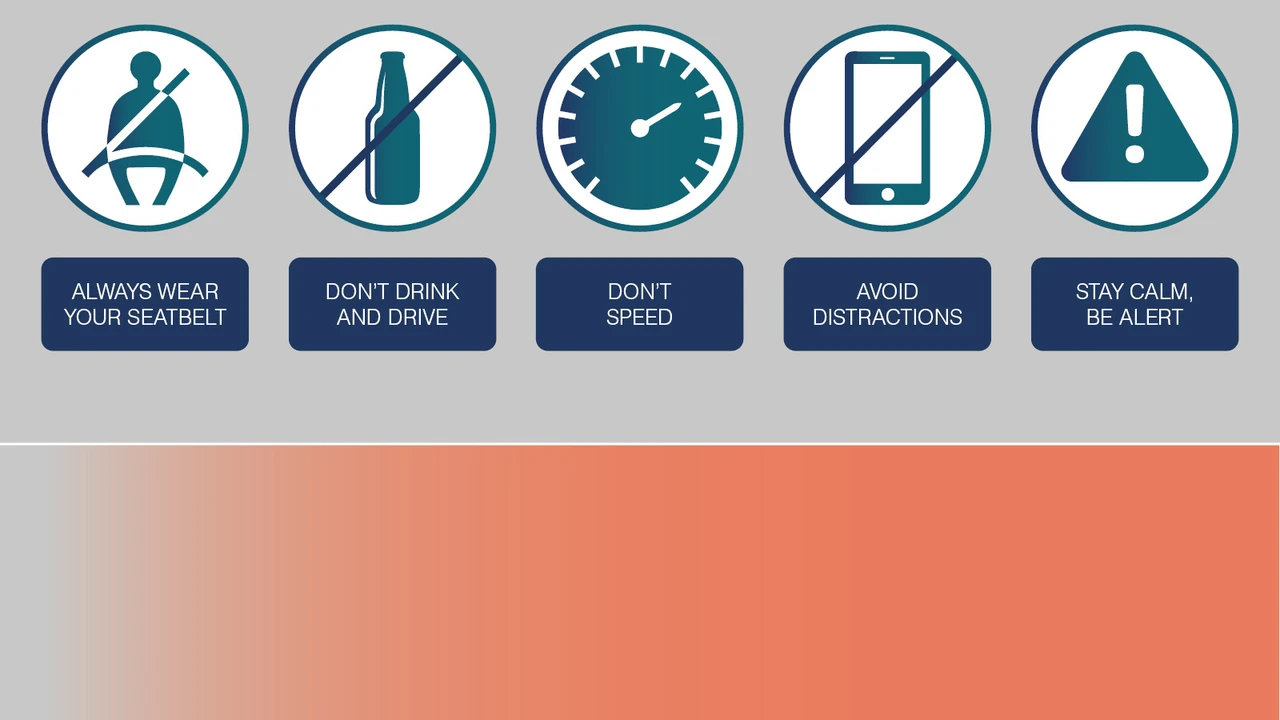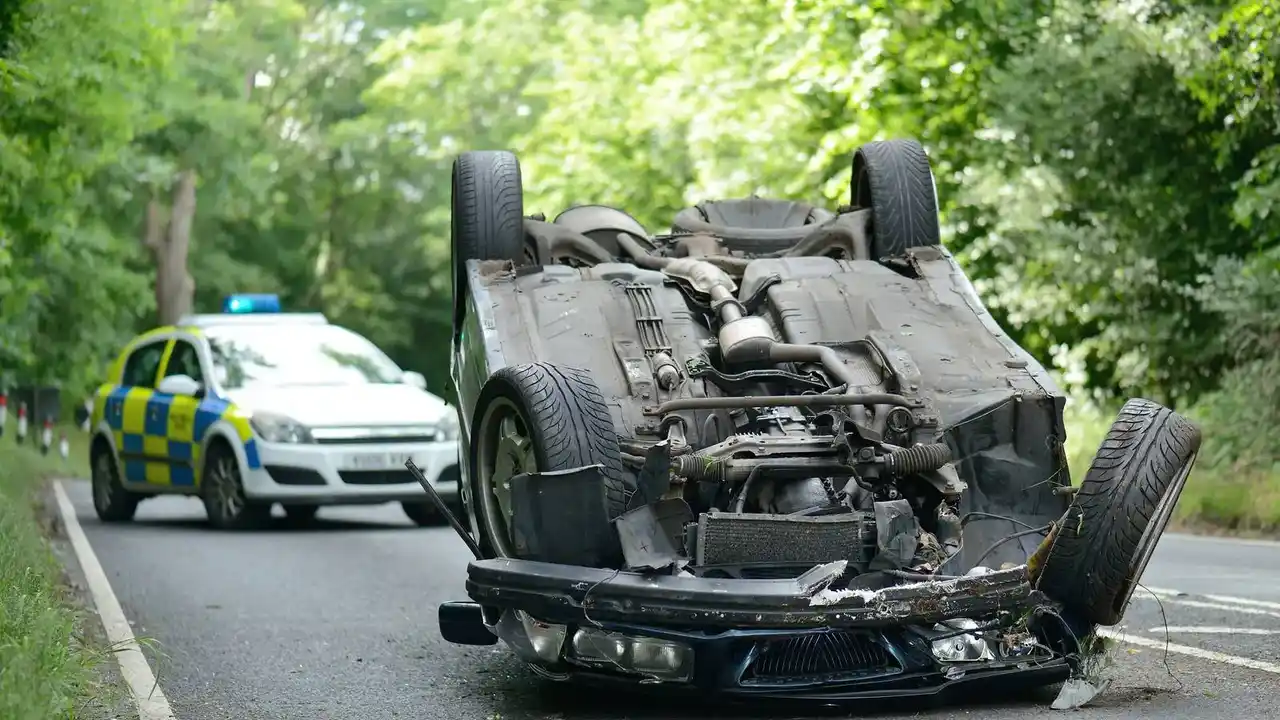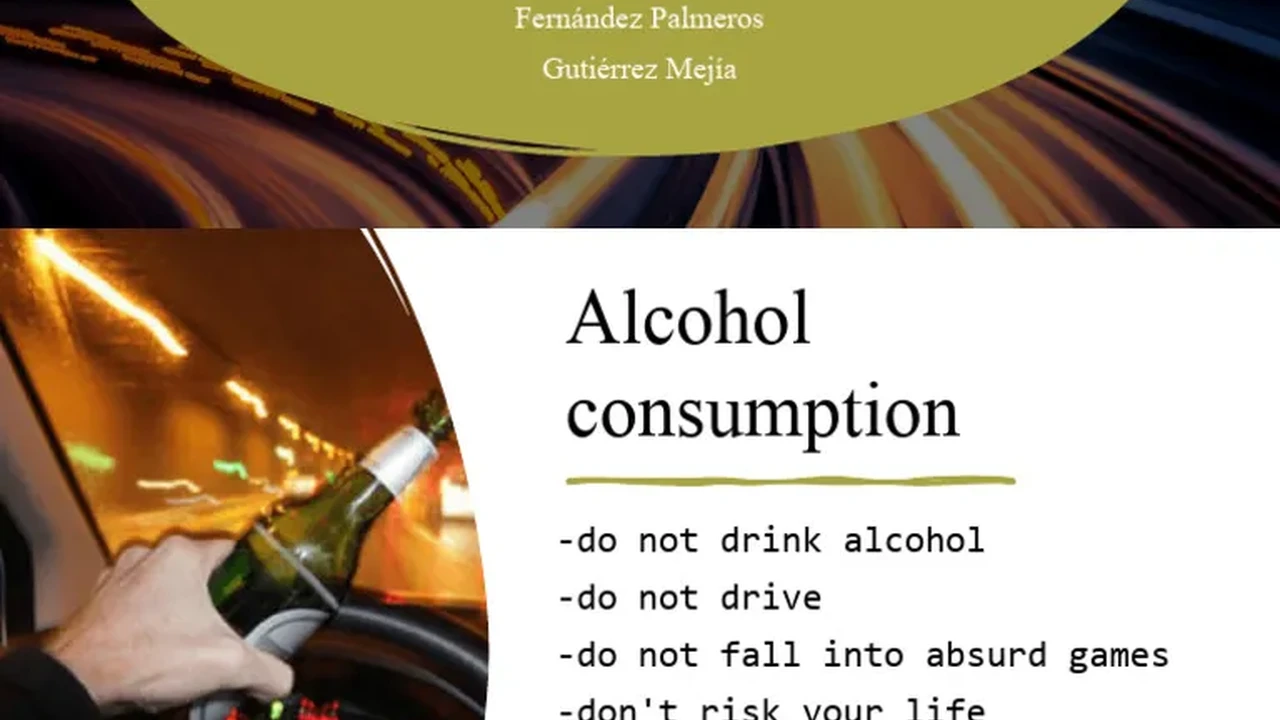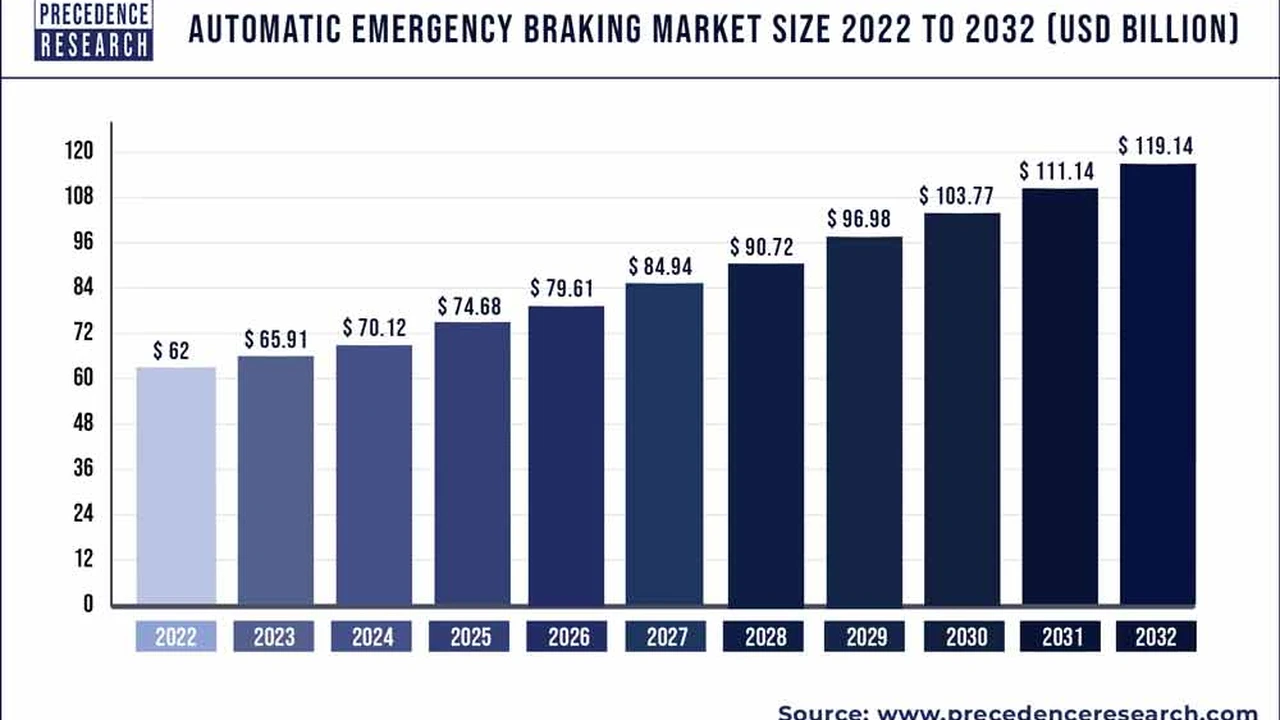Safe Driving Practices for Teenagers: A Guide for Parents and Young Drivers

Understanding the Risks Teen Drivers Face Common Causes of Accidents
Okay, so you're about to hit the road, or maybe your kid is. Either way, let's talk about why teen driving can be a little… dicey. It’s not just about inexperience, though that’s a big part of it. Studies show that young drivers are more likely to be involved in accidents due to a bunch of factors. We're talking distractions – phones, friends, loud music – impulsive decisions, and a tendency to overestimate their abilities. Add to that a lack of experience handling emergencies, and you've got a recipe for potential trouble.
So, what are the main culprits? Distracted driving is huge. Texting, Snapchatting, changing playlists – all take your eyes off the road, even for a split second, which can be disastrous. Speeding is another common problem. The thrill of the open road can be tempting, but exceeding the speed limit significantly increases the risk of an accident. Then there’s impaired driving, which includes alcohol and drugs. Even a small amount can severely affect judgment and reaction time. Finally, simple inexperience can lead to poor decision-making in challenging situations, like merging onto a busy highway or navigating bad weather.
Essential Safe Driving Tips for Teenagers and Beginner Drivers
Alright, let's get down to brass tacks. What can you do to stay safe behind the wheel? First and foremost, focus on the road. Put your phone away – seriously, in the glove compartment or back seat. No texting, no calls, no social media. If you need to use your phone, pull over to a safe location. Next, obey the speed limit. It's not just a suggestion; it's the law, and it's there for a reason. Speeding reduces your reaction time and increases the severity of a crash. Avoid distractions. That means limiting passengers, keeping the music at a reasonable volume, and avoiding eating or drinking while driving. Wear your seatbelt. It's the single most effective way to protect yourself in a crash. And finally, never drive under the influence. It's not worth the risk – to yourself or anyone else.
Beyond these basics, consider taking a defensive driving course. These courses teach you how to anticipate and react to potential hazards on the road. Also, practice driving in different conditions – rain, snow, at night – to gain experience and confidence. And remember, it's okay to ask for help. If you're unsure about something, ask a parent, driving instructor, or experienced driver for guidance.
Choosing the Right Car for Teen Drivers Safety Features and Considerations
The car you drive can make a big difference in your safety. When choosing a car for a teen driver, prioritize safety features over flashy looks. Look for vehicles with features like electronic stability control, anti-lock brakes, and multiple airbags. These features can help prevent accidents or reduce the severity of injuries in a crash. A good rule of thumb is to avoid very small or very old cars, as they may not have the latest safety technology. Also, consider a car with good visibility and easy-to-use controls.
Some specific models that are often recommended for teen drivers include the Subaru Impreza, Mazda 3, and Honda Civic. These cars have excellent safety ratings, good fuel economy, and are relatively affordable. They also come with a range of safety features, such as rearview cameras and automatic emergency braking. Avoid high-performance cars or SUVs, as they can be more difficult to control and may encourage risky driving behavior.
The Role of Parents in Teen Driver Safety Setting Rules and Enforcing Them
Parents play a crucial role in teen driver safety. It's not enough to just hand over the keys and hope for the best. You need to set clear rules and enforce them consistently. This includes rules about curfew, passengers, phone use, and driving under the influence. Make sure your teen understands the consequences of breaking these rules. Consider using a parent-teen driving agreement to formalize the rules and expectations.
Beyond setting rules, it's important to model safe driving behavior yourself. Your teen is watching you, and they're likely to mimic your driving habits. So, make sure you're always wearing your seatbelt, avoiding distractions, and obeying the speed limit. Also, provide ongoing support and guidance. Talk to your teen about their driving experiences, offer constructive feedback, and encourage them to ask questions. Remember, learning to drive is a process, and it takes time and practice to become a safe and confident driver.
Advanced Driver-Assistance Systems ADAS Explained for Young Drivers
Modern cars are packed with advanced driver-assistance systems (ADAS) designed to make driving safer. These systems can help prevent accidents by providing warnings, assisting with steering, and even automatically braking in certain situations. Some common ADAS features include:
- Automatic Emergency Braking (AEB): Detects potential collisions and automatically applies the brakes to avoid or mitigate the impact.
- Lane Departure Warning (LDW): Alerts the driver if the car is drifting out of its lane.
- Lane Keep Assist (LKA): Gently steers the car back into its lane if it starts to drift.
- Adaptive Cruise Control (ACC): Maintains a set distance from the car in front and automatically adjusts the speed to match traffic flow.
- Blind Spot Monitoring (BSM): Alerts the driver if there's a vehicle in their blind spot.
It's important for young drivers to understand how these systems work and how to use them effectively. However, it's also important to remember that ADAS is not a substitute for attentive driving. Drivers should always remain alert and focused on the road, even when using these systems.
The Importance of Graduated Driver Licensing GDL Programs for Teenagers
Graduated Driver Licensing (GDL) programs are designed to gradually introduce new drivers to the road, reducing their risk of accidents. These programs typically have three stages:
- Learner's Permit: Allows new drivers to practice driving under the supervision of a licensed adult.
- Intermediate License: Allows new drivers to drive unsupervised, but with certain restrictions, such as limits on nighttime driving and passengers.
- Full License: Grants full driving privileges.
GDL programs have been shown to be highly effective in reducing teen driver accidents. By gradually introducing new drivers to the road and imposing restrictions on high-risk situations, these programs help them gain experience and develop safe driving habits. If your state has a GDL program, make sure your teen follows all the requirements and restrictions.
Understanding Car Insurance for Teen Drivers Costs and Coverage Options
Car insurance is a necessary expense for all drivers, but it can be particularly expensive for teen drivers. This is because insurance companies consider young drivers to be high-risk, due to their inexperience and higher likelihood of accidents. There are several ways to reduce the cost of car insurance for teen drivers, such as:
- Adding your teen to your existing policy: This is usually cheaper than buying a separate policy for your teen.
- Taking a defensive driving course: Many insurance companies offer discounts for drivers who complete a defensive driving course.
- Maintaining good grades: Some insurance companies offer discounts for students who maintain a B average or higher.
- Choosing a safe car: Cars with good safety ratings and features may qualify for lower insurance rates.
It's important to understand the different types of car insurance coverage and choose the right options for your needs. Liability coverage protects you if you're at fault in an accident and cause damage to another person or their property. Collision coverage protects your car if it's damaged in an accident, regardless of who's at fault. Comprehensive coverage protects your car from other types of damage, such as theft, vandalism, or natural disasters. Uninsured/underinsured motorist coverage protects you if you're hit by a driver who doesn't have insurance or doesn't have enough insurance to cover your damages.
Dealing with Peer Pressure and Risky Driving Situations Teen Driver Strategies
Peer pressure can be a significant factor in teen driver accidents. Young drivers may feel pressured to speed, show off, or engage in other risky behaviors when their friends are in the car. It's important for teen drivers to develop strategies for dealing with peer pressure and making safe decisions, even when their friends are encouraging them to do otherwise. Some strategies include:
- Setting clear boundaries: Let your friends know that you're not going to engage in risky driving behaviors, no matter what.
- Standing up for yourself: Don't be afraid to say no if you feel uncomfortable or unsafe.
- Finding supportive friends: Surround yourself with friends who respect your decisions and encourage you to be a safe driver.
- Having an escape plan: If you find yourself in a risky situation, have a plan for getting out of it safely. This could involve calling a parent, taking a taxi, or finding another ride home.
Maintaining Your Vehicle Regular Checks and Preventative Maintenance for Safe Driving
Regular vehicle maintenance is essential for safe driving. Neglecting maintenance can lead to mechanical problems that can increase the risk of accidents. Some important maintenance tasks include:
- Checking your tires: Make sure your tires are properly inflated and have enough tread.
- Checking your fluids: Regularly check your oil, coolant, brake fluid, and power steering fluid levels.
- Checking your lights: Make sure all your lights are working properly, including headlights, taillights, brake lights, and turn signals.
- Checking your brakes: Have your brakes inspected regularly to ensure they're in good working order.
- Following the manufacturer's recommended maintenance schedule: Consult your owner's manual for a list of recommended maintenance tasks and intervals.
Driving in Different Weather Conditions Tips for Rain Snow and Ice
Driving in inclement weather can be challenging, even for experienced drivers. It's important to adjust your driving habits to the conditions and take extra precautions to stay safe. Here are some tips for driving in rain, snow, and ice:
- Reduce your speed: Driving slower gives you more time to react and reduces the risk of skidding.
- Increase your following distance: Give yourself more space between you and the car in front of you.
- Turn on your headlights: Even during the day, headlights can improve visibility in bad weather.
- Avoid sudden movements: Accelerate, brake, and steer smoothly and gradually.
- Be aware of black ice: Black ice is a thin, transparent layer of ice that can be difficult to see. It's often found on bridges, overpasses, and shaded areas.
- If you start to skid, steer in the direction of the skid: This will help you regain control of the car.
The Dangers of Drowsy Driving Recognizing the Signs and Staying Alert
Drowsy driving can be just as dangerous as drunk driving. When you're tired, your reaction time slows down, your judgment is impaired, and you're more likely to make mistakes. Some signs of drowsy driving include:
- Yawning frequently
- Difficulty focusing
- Drifting out of your lane
- Missing exits
- Feeling heavy eyelids
If you experience any of these symptoms, pull over to a safe location and take a break. Get some sleep, drink some caffeine, or take a walk to refresh yourself. Don't try to push through – it's not worth the risk.
Product Recommendations for Teen Driver Safety Enhancements
Here are a few product recommendations that can enhance teen driver safety, along with their use cases, comparisons, and estimated prices:
Dash Cams: Witnessing the Road
Use Case: Recording driving events to provide evidence in case of an accident, monitor driving habits, and deter reckless behavior.
Product Recommendations:
* Vantrue N4 Pro 3 Channel Dash Cam: Records front, inside, and rear views simultaneously. Ideal for ride-sharing or monitoring passengers. Price: $279.99. * Garmin Dash Cam 67W: Compact, high-quality video, voice control, and incident detection. Price: $259.99. * Nextbase 622GW: 4K resolution, image stabilization, and emergency SOS feature. Price: $399.99.Comparison: Vantrue offers comprehensive coverage, Garmin is user-friendly, and Nextbase provides top-tier image quality and features. Choose based on your specific needs and budget.
Blind Spot Mirrors: Expanding Your Vision
Use Case: Eliminating blind spots to improve lane changes and merging safety.
Product Recommendations:
* Ampper Blind Spot Mirrors: Adjustable and easy to install. Price: $8.99 (for a pair). * Fit System C4250 Universal Blind Spot Mirror: Larger surface area for wider visibility. Price: $12.99 (for a pair).Comparison: Ampper is an affordable and basic option, while Fit System offers a larger view. Both are easy to install and improve safety.
Smartphone Driving Safety Apps: Monitoring and Coaching
Use Case: Tracking driving behavior, providing feedback, and rewarding safe driving habits.
Product Recommendations:
* DriveSafe.ly: Reads texts and emails aloud so that the new driver can pay attention to the road. Subscription prices vary. * Life360: Family safety app with crash detection and emergency response features. Subscription prices vary.Comparison: These apps offer different features and pricing models. Choose the one that best fits your needs and budget.
Tire Pressure Monitoring Systems (TPMS): Ensuring Optimal Tire Performance
Use Case: Monitoring tire pressure in real-time to improve fuel efficiency, extend tire life, and prevent blowouts.
Product Recommendations:
* FOBO Tire 2: Bluetooth TPMS that connects to your smartphone. Price: $239. * EEZRV TPMS: Wireless TPMS with a dedicated display. Price: $189.Comparison: FOBO Tire 2 offers smartphone integration, while EEZRV TPMS has a dedicated display. Choose based on your preference for connectivity and ease of use.
Resources for Parents and Teen Drivers Further Education and Support
There are many resources available to help parents and teen drivers stay safe on the road. Some helpful resources include:
* National Highway Traffic Safety Administration (NHTSA): Provides information on safe driving practices, vehicle safety ratings, and recalls. * Insurance Institute for Highway Safety (IIHS): Conducts crash tests and provides safety ratings for vehicles. * AAA Foundation for Traffic Safety: Conducts research on traffic safety issues and provides educational resources. * Local driving schools: Offer defensive driving courses and other training programs for new drivers.By taking advantage of these resources, parents and teen drivers can gain the knowledge and skills they need to stay safe on the road.
:max_bytes(150000):strip_icc()/277019-baked-pork-chops-with-cream-of-mushroom-soup-DDMFS-beauty-4x3-BG-7505-5762b731cf30447d9cbbbbbf387beafa.jpg)






